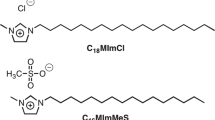Abstract
Mosquitoes are known for acquiring resistance against insecticides in many ways, namely target side mutation, enzyme modification, sequestration, quick elimination, etc. But, the role of microflora present in abundance in the larval midgut is less explored with respect to their role in insecticide resistance. During the course of their development, mosquitoes are continuously exposed to microbes and have naturally acquired midgut microbial flora. This midgut flora can modulate the mosquito's susceptibility to Bacillus thuringiensis (Bt) infection by degrading toxic Bt protein forms through an unknown mechanism. In this study, we show that microbe-free aseptic mosquito larvae displayed an increased susceptibility to Bt toxicity compared to larvae harboring natural microbial flora. Fourth instar larvae of Anopheles stephensi were treated separately with penicillin, streptomycin, erythromycin (100 μg/ml), and mixtures of all three antibiotics and then analyzed for Bt toxicity. We have also examined the influence of the mosquito's midgut microbial flora under microaerophilic condition on the Bt protein degradation through plate, broth, TLC, and UV–vis spectrophotometric assay. A better understanding of the roles of microbiota in preventing Bt toxicity to mosquitoes could potentially lead to the development of new sustainable mosquito control strategies.


Similar content being viewed by others
References
Abbott WS (1925) A method of computing the effectiveness of an insecticide. J Eco Entomol 18:265–266
Baumann P, Clark MA, Baumann L, Broadwell A (1991) Bacillus sphaericus as a mosquitocidal pathogen: properties of the organism and its toxins. Microbiol Rev 55:425–36
Bisi DC, Lampe DJ (2011) Secretion of anti-Plasmodium effector proteins from a natural Pantoea agglomerans isolate by using PelB and HlyA secretion signals. Appl Environ Microbiol 77:4669–4675
Broderick NA, Raffa KF, Handelsman J (2006) Midgut bacteria required for Bacillus thuringiensis insecticidal activity. Proc Nat Acad Sci 103:15196–15199
Charan SS, Pawar KD, Severson DW, Patole MS, Shouche YS (2013) Comparative analysis of midgut bacterial communities of Aedes aegypti mosquito strains varying in vector competence to dengue virus. Parasitol Res. doi:10.1007/s00436-013-3428-x
Charles JF, Nielsen-LeRoux C, Delécluse A (1996) Bacillus sphaericus toxins: molecular biology and mode of action. Ann Rev Entomol 41:451–72
da Silva OS, Prado GR, da Silva JLR, Silva CE, da Costa M, Heermann R (2013) Oral toxicity of Photorhabdus luminescens and Xenorhabdus nematophila (Enterobacteriaceae) against Aedes aegypti (Diptera: Culicidae). Parasitol res DOI. doi:10.1007/s00436-013-3460-x
Dong Y, Manfredini F, Dimopoulos G (2009) Implication of the mosquito midgut microbiota in the defense against malaria parasites. PLoS Pathog 5:e1000423
Fedhila S, Nel P, Lereclus D (2002) The InhA2 metalloprotease of Bacillus thuringiensis strain 407 is required for pathogenicity in insects infected via the oral route. J Bacteriol 184:3296–3304
Gaio Ade O, Gusmao D, Santos A, Berbert-Molina M, Pimenta P et al (2011) Contribution of midgut bacteria to blood digestion and egg production in Aedes aegypti (Diptera: Culicidae) (L.). Parasit Vectors 4:105. doi:10.1186/1756-3305-4-105
Gonzalez-Ceron L, Santillan F, Rodriguez MH, Mendez D, Hernandez-Avila JE (2003) Bacteria in midguts of field-collected Anopheles albimanus block Plasmodium vivax sporogonic development. J Med Entomol 40:371–374
Hyde JA, Trzeciakowski JP, Skare JT (2007) Borrelia burgdorferi alters its gene expression and antigenic profile in response to CO2 levels. J Bacteriol 189:437–445
Jariyapan N, Saeung A, Intakhan N, Chanmol W, Sor-suwan S, Phattanawiboon B, Taai K, Choochote W (2013) Peritrophic matrix formation and Brugia malayi microfilaria invasion of the midgut of a susceptible vector, Ochlerotatus togoi (Diptera: Culicidae). Parasitol res DOI. doi:10.1007/s00436-013-3404-5
Kikuchi Y, Hayatsu M, Hosokawa T, Nagayama A, Tago K, Fukatsu T (2012) Symbiont-mediated insecticide resistance. Proc Nat Acad Sci 109:8618–8622
Patil CD, Patil SV, Salunke BK, Salunkhe RB (2012) Insecticidal potency of bacterial species Bacillus thuringiensis SV2 and Serratia nematodiphila SV6 against larvae of mosquito species Aedes aegypti, Anopheles stephensi, and Culex quinquefasciatus. Parasitol Res 110:1841–1847
Patil CD, Patil SV, Salunke BK, Salunkhe RB (2011) Prodigiosin produced by Serratia marcescens NMCC46 as a mosquito larvicidal agent against Aedes aegypti and Anopheles stephensi. Parasitol Res 109:1179–1187
Rani A, Sharma A, Rajagopal R, Adak T, Bhatnagar RK (2009) Bacterial diversity analysis of larvae and adult midgut microflora using culture dependent and culture-independent methods in lab-reared and field-collected Anopheles stephensi—an Asian malarial vector. BMC Microbiol 9:96
Saleh MS, El-Meniawi FA, Kelada NL, Zahran HM (2003) Resistance development in mosquito larvae Culex pipiens to the bacterial agent Bacillus thuringiensis var. israelensis. J Appl Entomol 127:29–32
Takatsuka J, Kunimi Y (2000) Intestinal bacteria affect growth of Bacillus thuringiensis in larvae of the oriental tea tortrix, Homona magnanima Diakonoff (Lepidoptera: Tortricidae). J Invertebr Pathol 76:222–226
Tolle MA (2009) Mosquito-borne diseases. Curr Probl Pediatr Adolesc Health Care 4:97–140
Toure´ AM, Mackey AJ, Wang ZX, Beier JC (2000) Bactericidal effects of sugar-fed antibiotics on resident midgut bacteria of newly emerged anopheline mosquitoes (Diptera: Culicidae). J Med Entomol 37:246–249
Wang Y, Gilbreath TM III, Kukutla P, Yan G, Xu J (2011) Dynamic gut microbiome across life history of the malaria mosquito Anopheles gambiae in Kenya. PLoS One 6(9):e24767. doi:10.1371/journal.p one.0024767
Wirth MC (2010) Mosquito resistance to bacterial larvicidal toxins. Open Toxicol J 3:126–140
Yuan Z, Zhang Y, Cai Q, Liu EY (2000) High-level field resistance to Bacillus sphaericus C3-41 in Culex quinquefasciatus from Southern China. Biocontrol Sci Tech 10:41–49
Acknowledgments
Chandrashekhar D. Patil is thankful to CSIR (09/728 (0028)/2012-EMR-I) for the award of senior research fellowship.
Author information
Authors and Affiliations
Corresponding author
Electronic supplementary material
Below is the link to the electronic supplementary material.
ESM 1
(DOCX 111 kb)
Rights and permissions
About this article
Cite this article
Patil, C.D., Borase, H.P., Salunke, B.K. et al. Alteration in Bacillus thuringiensis toxicity by curing gut flora: novel approach for mosquito resistance management. Parasitol Res 112, 3283–3288 (2013). https://doi.org/10.1007/s00436-013-3507-z
Received:
Accepted:
Published:
Issue Date:
DOI: https://doi.org/10.1007/s00436-013-3507-z




